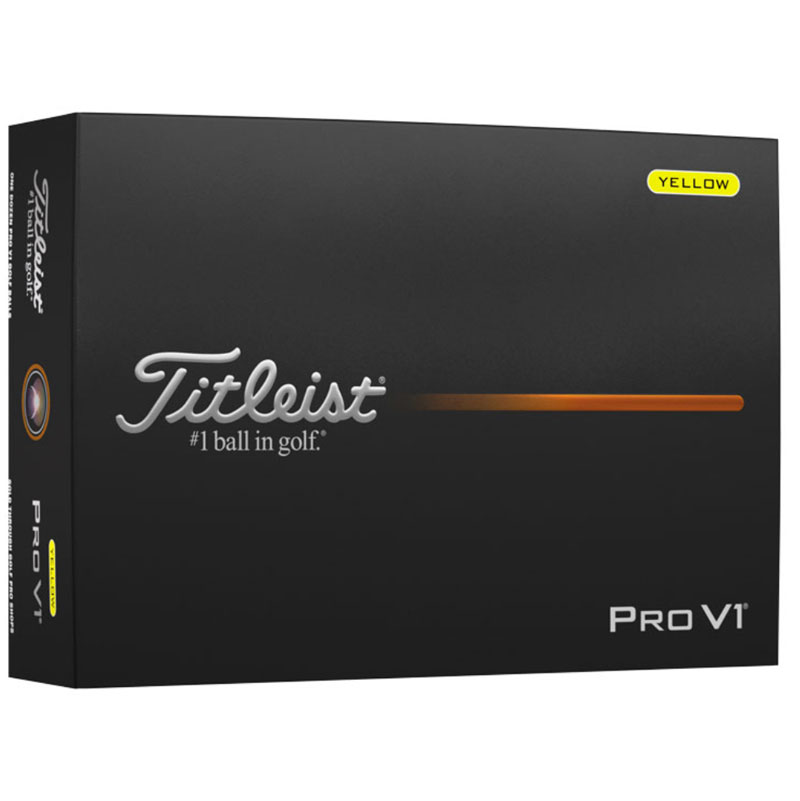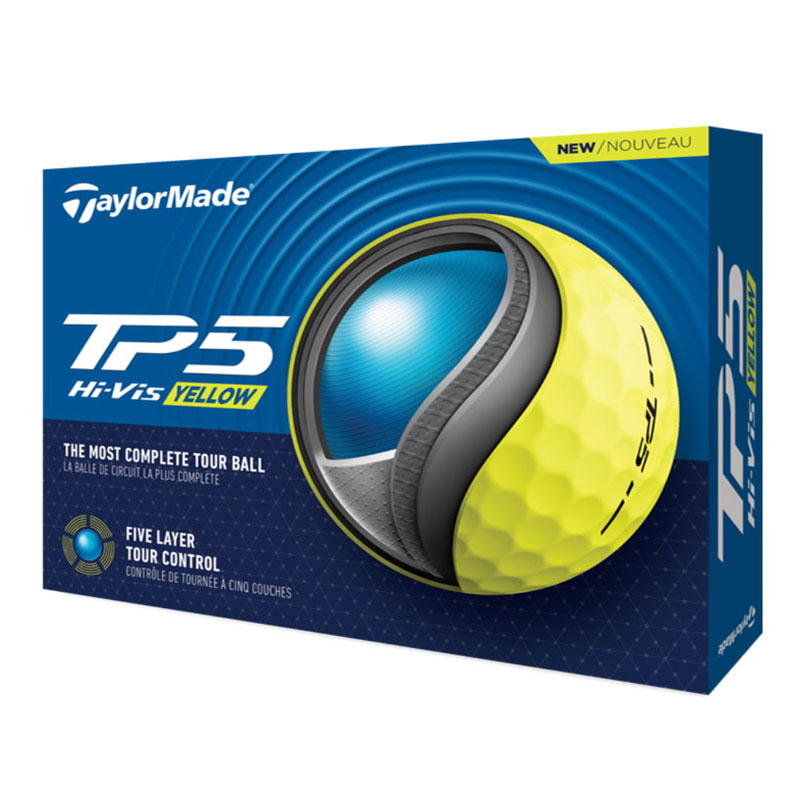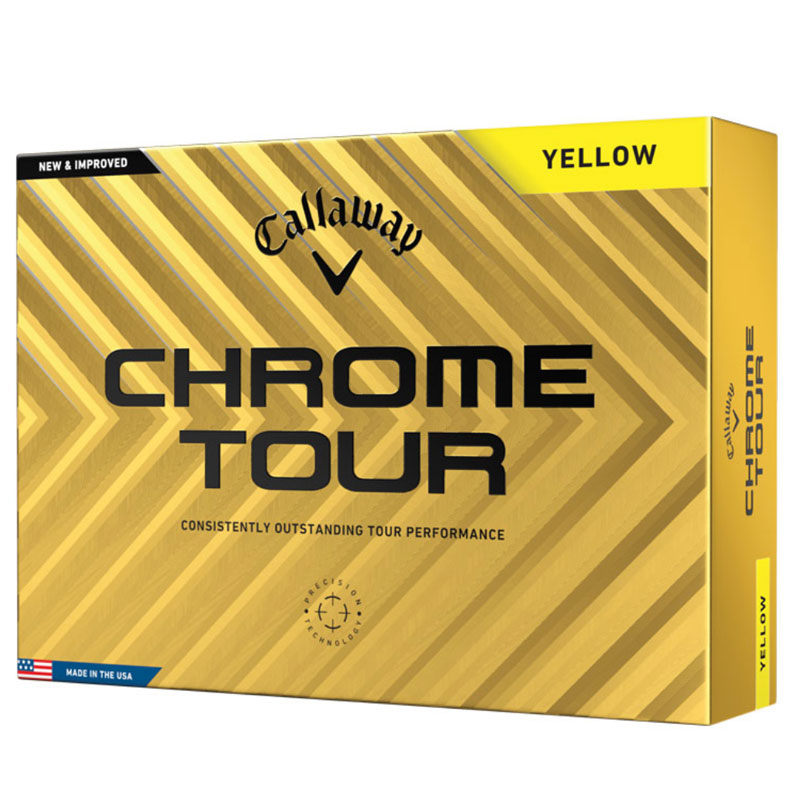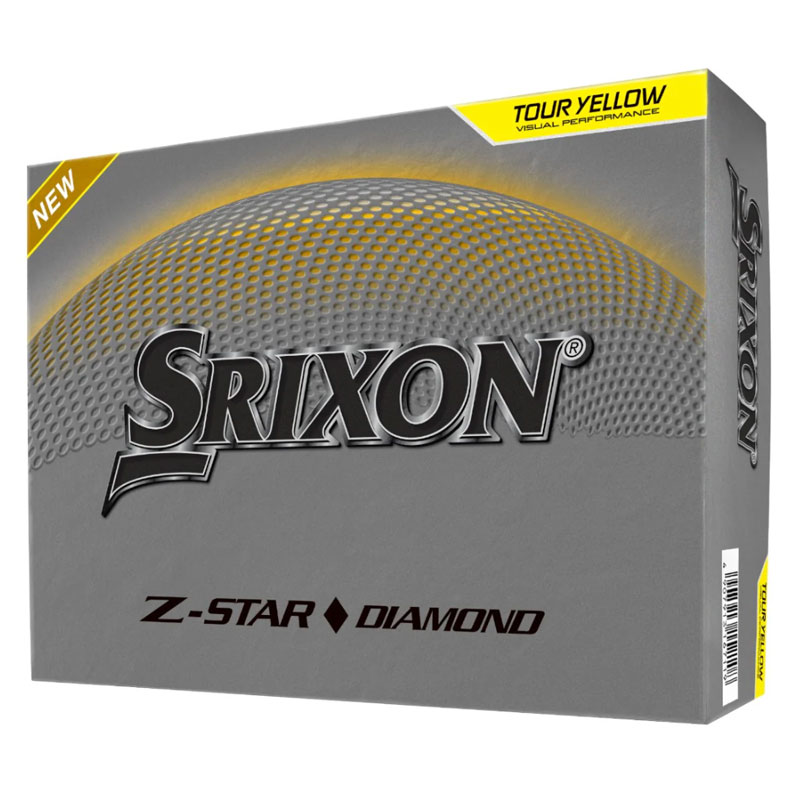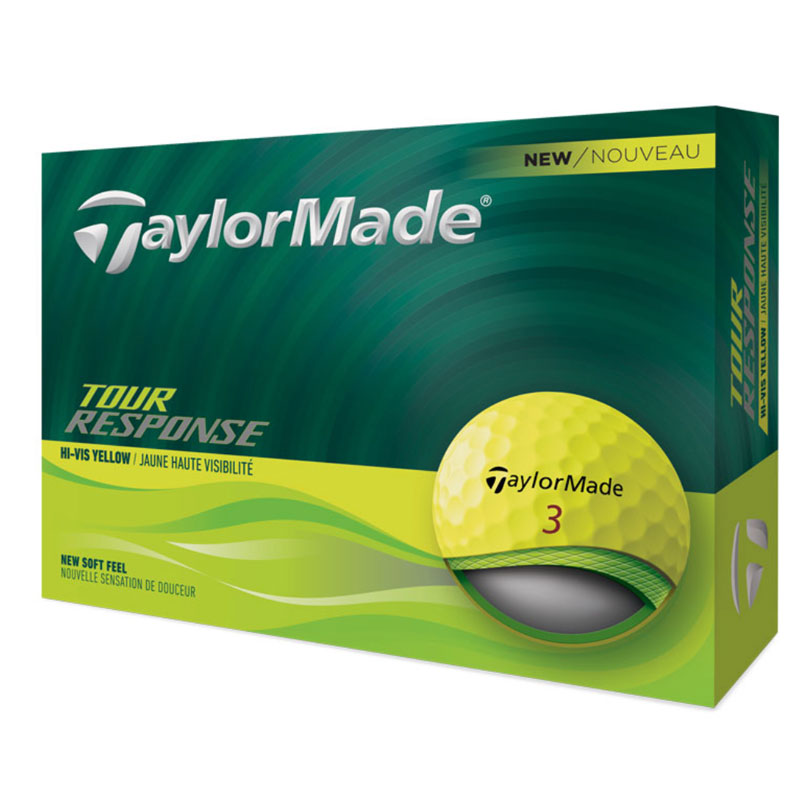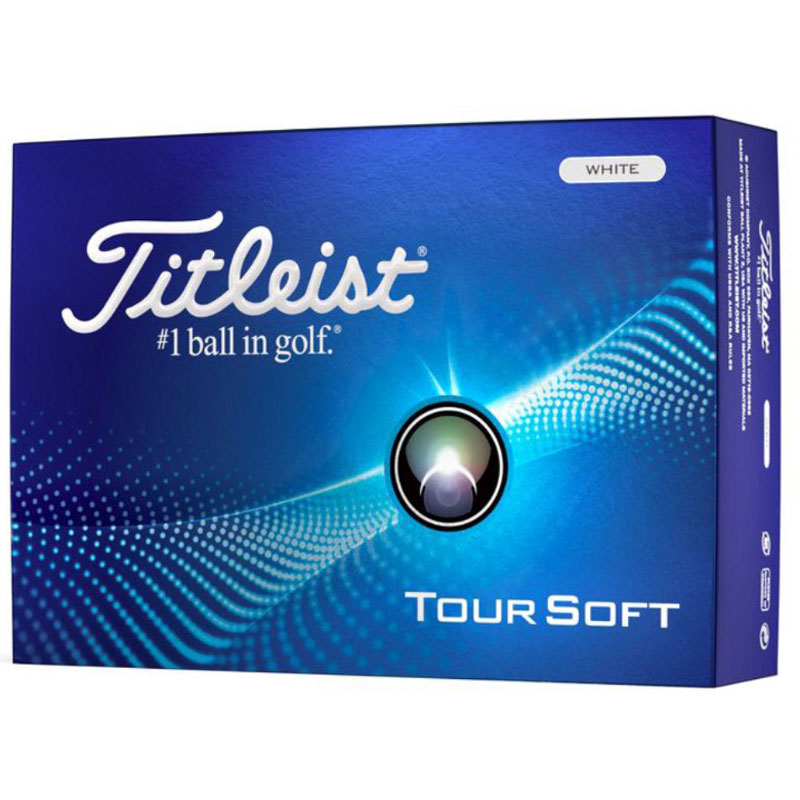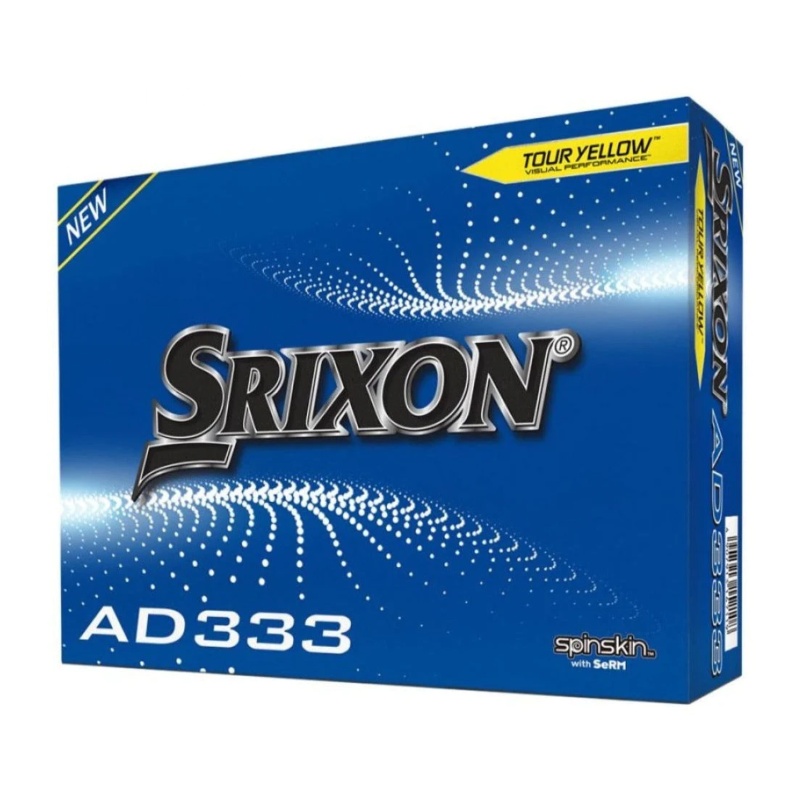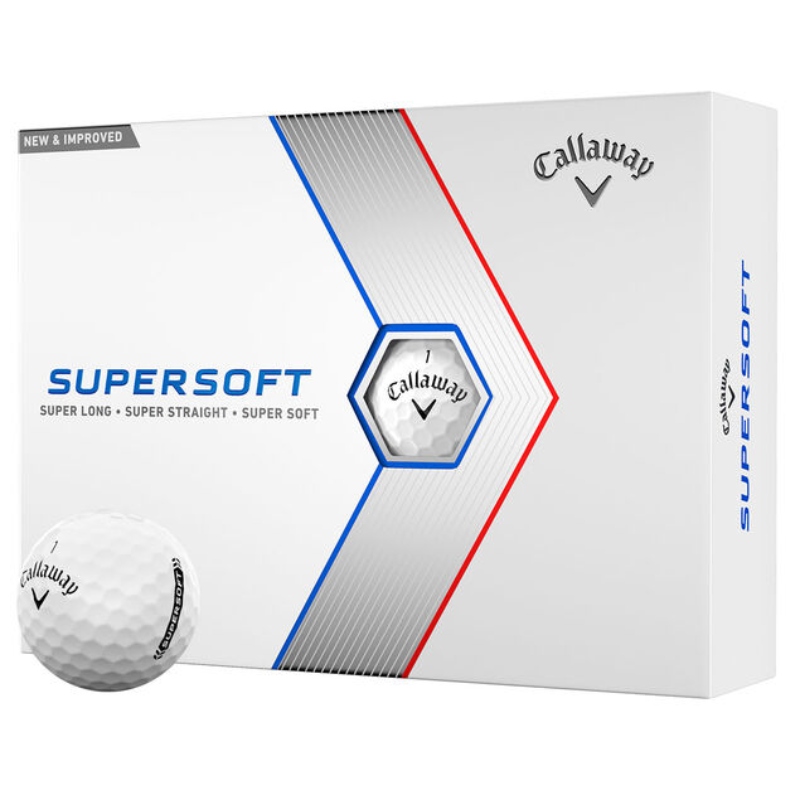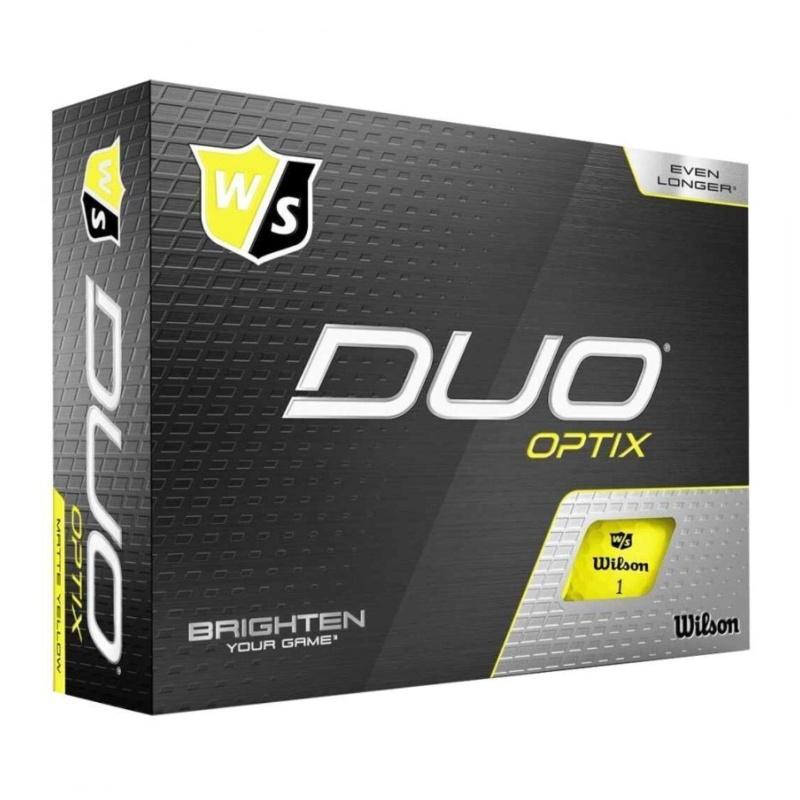Best Yellow Golf Balls 2025
With color now much more in vogue on the golf ball front, we pick out the best yellow golf balls across the performance spectrum

Conor Keenan
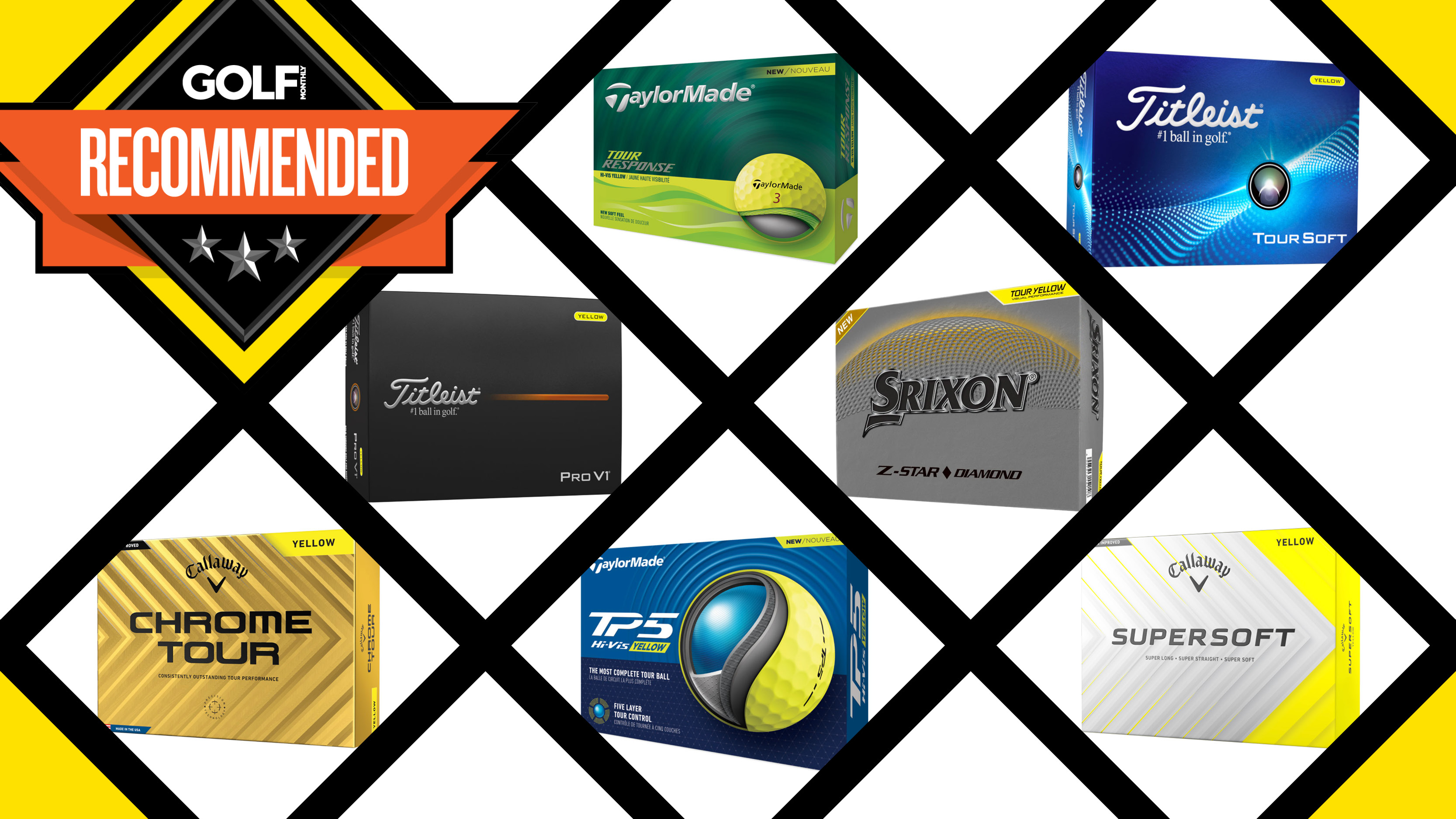
They aren't for everyone, but yellow golf balls can be helpful for golfers who have a habit of losing golf balls in longer rough. Most of the best golf balls are available in the yellow colorway, including the popular Titleist Pro V1.
Colored golf balls have grown in popularity in recent years after being largely shunned by the majority of the golf community. The yellow ball was considered by many to be inappropriate out on the course, but as a few professional tour player began using them, the stigma would slowly pass away.
It's worth noting that yellow golf balls aren't always the easiest to spot in the rough. During winter, for example, it can be easier to spot them if the ground has frosted over or if there is a light dew on the grass. However, during scorching summer days when the sun is glaring, the yellow colour doesn't pop in the long grass as much as you might think.
In this guide, we'll be rounding up some of the best yellow balls on the market taking in a variety of different price points and target audiences. But why not also take a look at some of our other golf ball guides, on the best value golf balls and the best golf balls for high handicappers.
The Quick List
Load the next 3 products
Best Yellow Golf Balls
Titleist 2025 Pro V1 Golf Ball
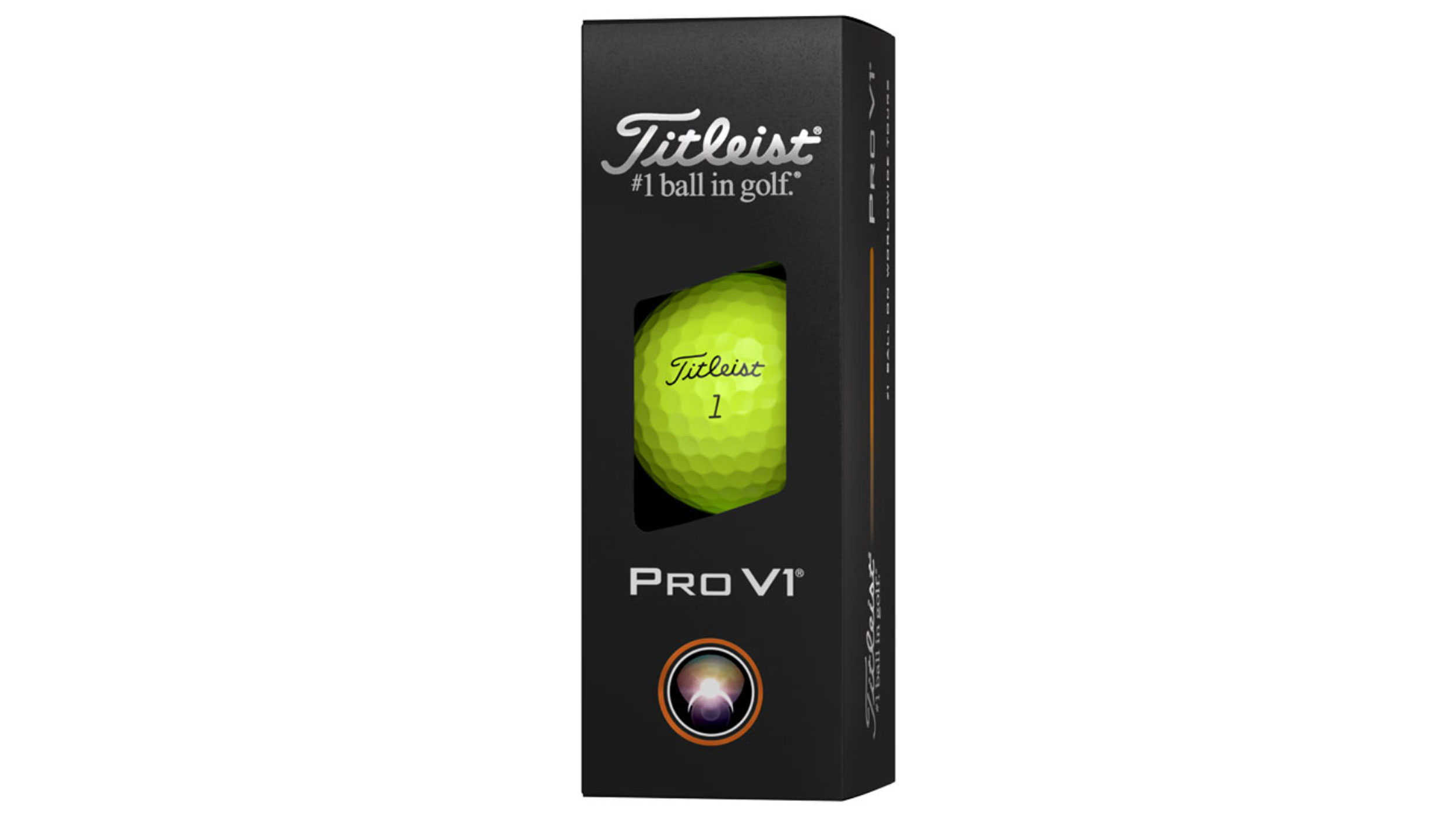
Specifications
Reasons to buy
Reasons to avoid
The Titleist Pro V1 is the most used golf ball on the professional circuit and arguably the biggest equipment franchise the game has ever seen. Now in its 25th year, it still features in the white and yellow colors, with Titleist’s engineers promising more distance, lower long game spin and a more consistent flight. Did they deliver this? You bet they did.
This golf ball remains one of, if not the leading choice in premium golf balls for the advanced player who wants distance off the tee alongside excellent levels of control with the short game. The extra oomph off the tee will be well received by user in addition to the extra stability of the flight, meaning this ball performs very well in windy conditions. This is a ball in which you feel in control of no matter what club you have in your hand, which is the ultimate compliment we can give to a golf ball.
However, whilst the Pro V1 is an excellent ball, it may not be best suited to your game. However, there is no need to venture outside of the family due to the performance of the Pro V1x which would be better suited to those with lower spin numbers, particularly off the tee, or those who want a little extra spin with pitch and chip shots around the green. Luckily for readers of this guide, it's also available in yellow!
- Read our full Titleist Pro V1 2025 Golf Ball Review
TaylorMade 2024 TP5 Golf Ball
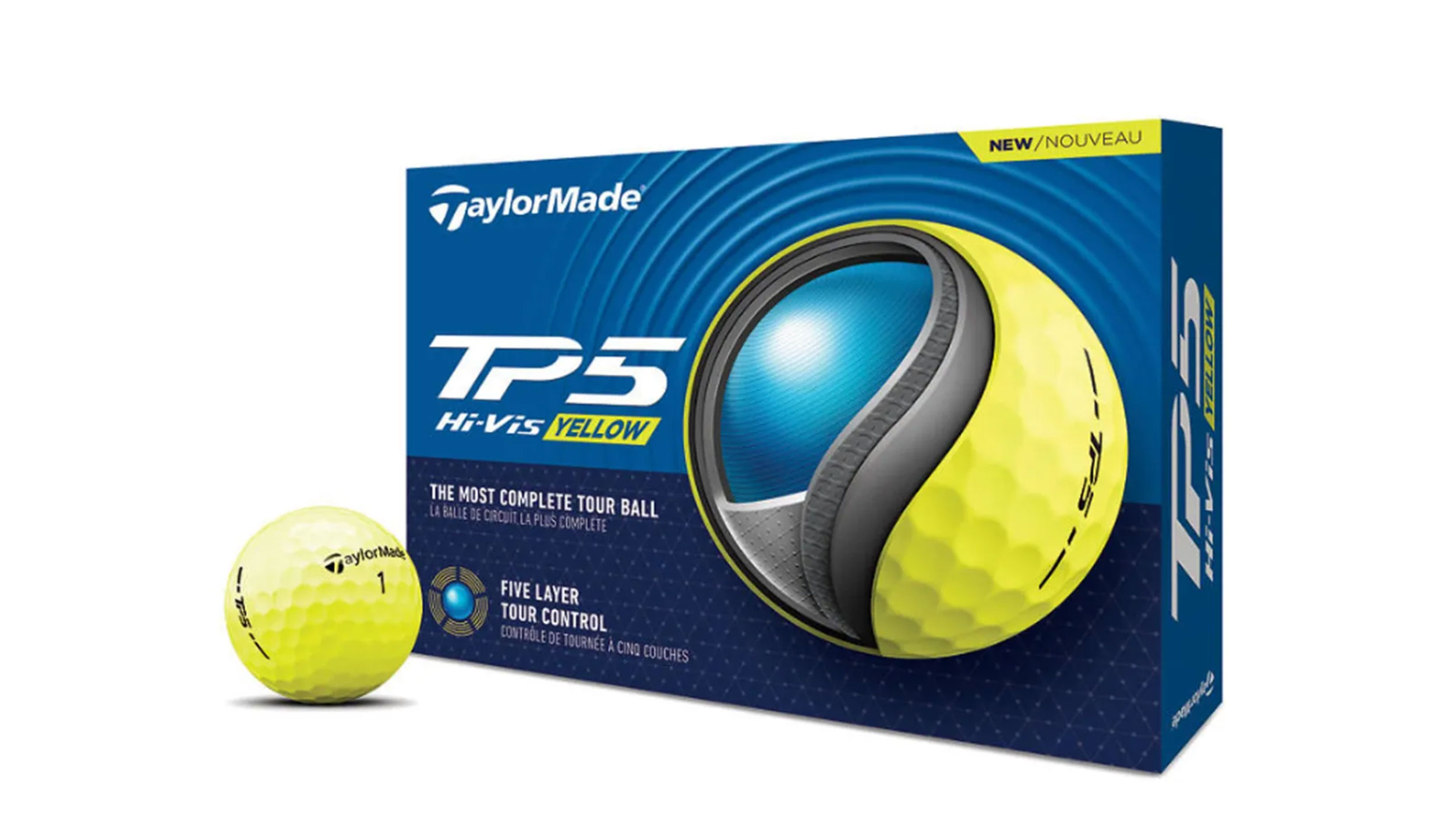
Specifications
Reasons to buy
Reasons to avoid
In a congested area at the top of the golf ball market, we feel the TP5 golf ball from TaylorMade is the standout in terms of short game control. It also stood out in terms of a consistent, penetrating ball flight as well as durability - an underrated aspect when we rate and review these types of golf ball offerings.
TaylorMade made a notable change to the core of the 2024 version of the TP5, switching to a lower density acoustic material that sounds and feels that little bit softer than its predecessor. This new core did lead to the TP5 lagging a little behind the TP5x in terms of ball speed, so those who seek distance off the tee may want to opt for the latter, but the feel in the short game department is next to none.
Not only does the higher spin rate mean better short game control, it also means more control with our approach shots. The ball flight was consistent and as a result, we felt in control of the ball as we attacked flags. The price point coming in slightly less than other premium golf balls is another green tick beside what is a fantastic golf ball.
- Read our full TaylorMade TP5 Golf Ball Review
Callaway Chrome Tour Golf Ball
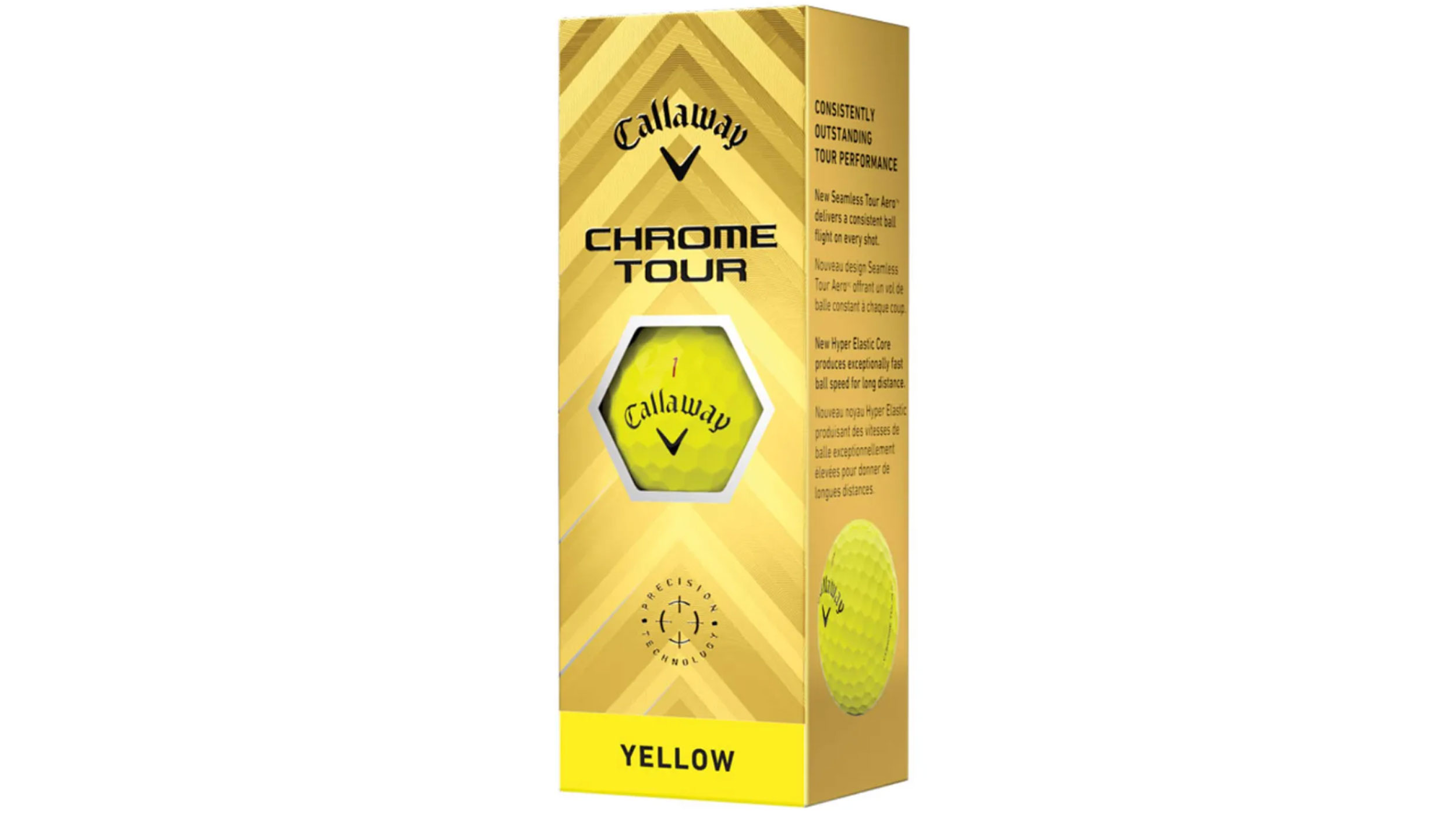
Callaway Chrome Tour Golf Ball
Specifications
With the Chrome Tour golf ball, Callaway set out to make a softer feeling golf ball that doesn't spin too much and throughout the bag we think they've achieved this. The introduction of a new Hyperfast Soft core to increase speed is the big tech innovation for the latest iteration of the ball which we thought particularly excelled when playing in windy conditions. This was also helped by a unique a cross-over dimple pattern that is built on both hexagonal and spherical dimples to aid control.
The new design means ball speeds lag behind other options at the top of the market ever so slightly, but this does mean this ball then has a broader appeal to golfers across different abilities, especially when you factor in the softer feel and dull but pleasant acoustic.
Players that swing out of their shoes and/or produce high levels of spin might be best to opt for other options like the Callaway Chrome Tour X given the sight lack of distance, however.
- Read our full Callaway Chrome Tour Golf Ball Review
Srixon 2025 Z-Star Diamond Golf Ball
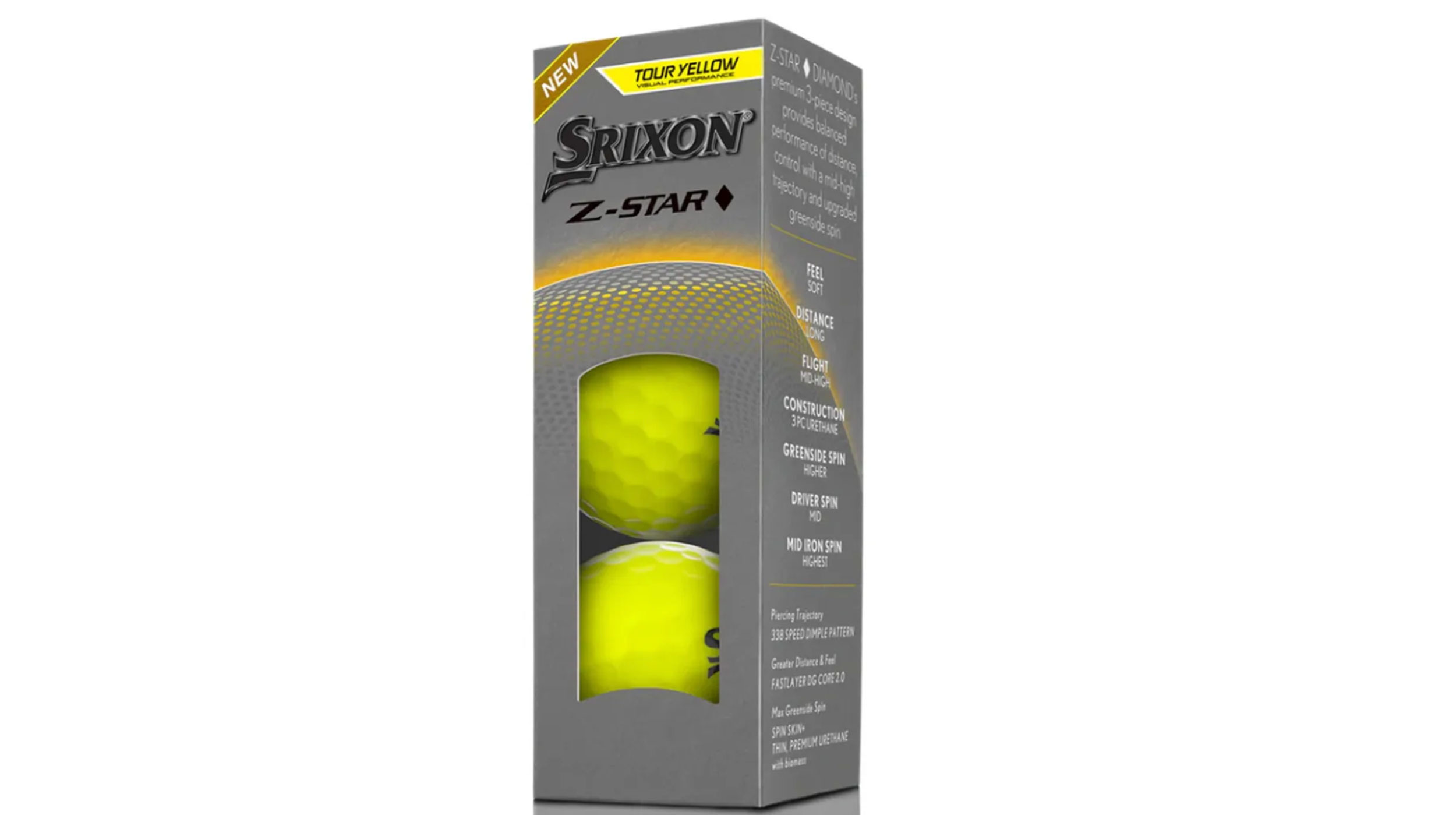
Specifications
Reasons to buy
Reasons to avoid
Our pick for the most underrated golf ball on the premium side of the market is the Srixon Z-Star Diamond. During testing this ball provided exceptional levels of spin which made firing at pins a fun exercise as well as chipping from around the green. This is thanks in part to the same excellent urethane cover from the previous iteration, but also the new Spin Skin+ coating which digs deeper into the grooves of your irons and wedges and therefore provides better control.
We really liked how it dealt with windy conditions and the 338 dimple pattern kept the ball under control even when flighted high and can see why tour players like Brooks Koepka, Sepp Staka and Shane Lowry have opted to add this ball to their setup in recent years. This performance combined with its soft feel makes this a very appealing option, especially for those with higher swing speeds who want to see the ball penetrating through the air in blustery conditions.
- Read our full Srixon Z-Star Diamond Golf Ball Review
TaylorMade 2025 Tour Response Golf Ball
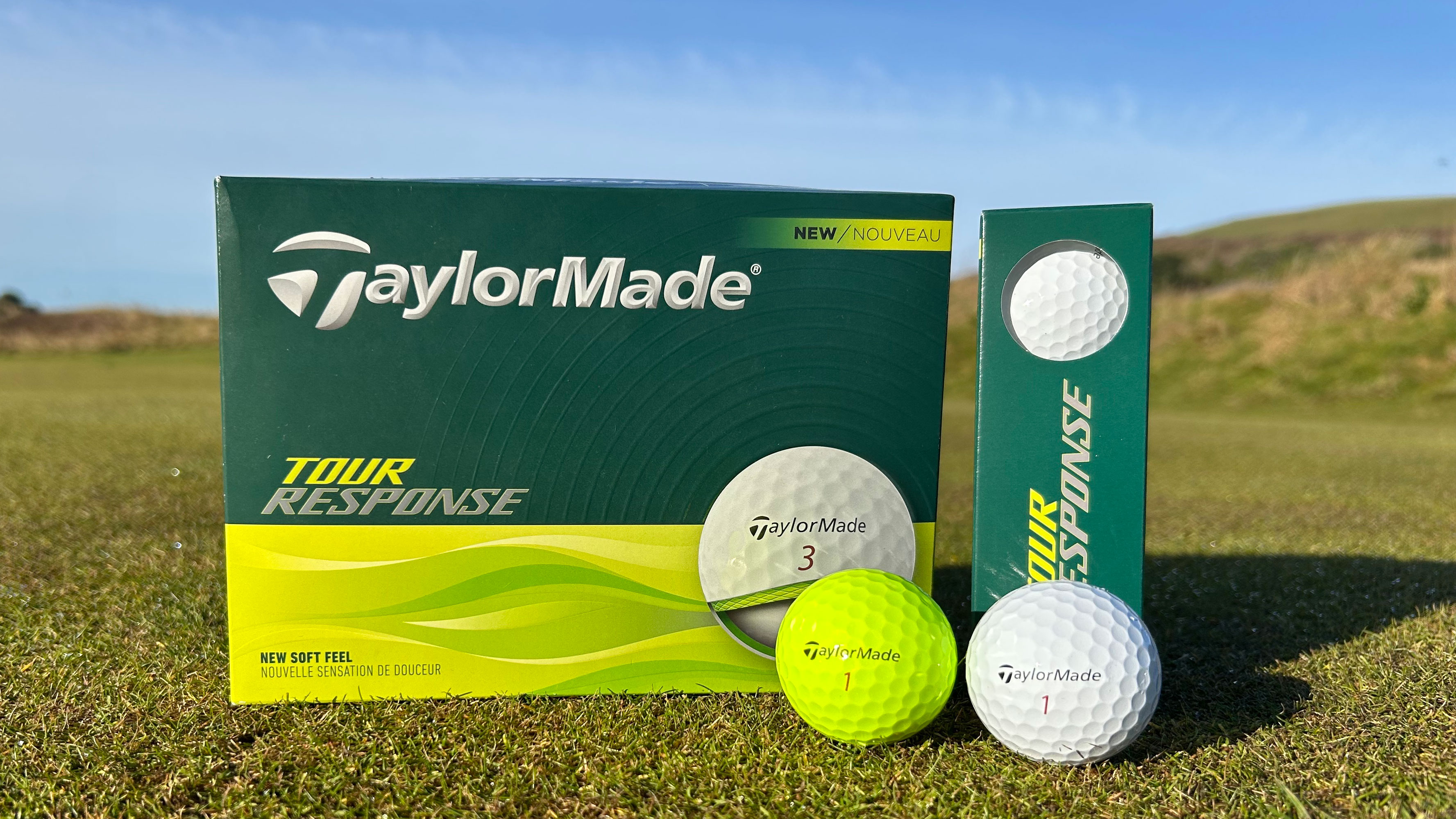
Specifications
Reasons to buy
Reasons to avoid
If you don't want to break the bank but want a golf ball that performs well out on the course, particularly with short game, look no further than TaylorMade's Tour Response.
Hitting the shelves at $40 for a dozen, it's notably cheaper than rival models from other manufacturers despite arguably delivering more performance. The 2025 Tour Response balls are constructed with a 100 per cent cast urethane cover looking to reap the benefits of spin while promoting durability whilst a new Speed Wrapped Core Technology that is used on both the TP5 and the TP5x golf balls is used to reduce the density of the core, dampening sound and promoting a faster construction for enhanced ball speed and distance. This golf ball ticks every box for the player who doesn't want to shell out top dollar for a premium golf ball but wants a bit more performance than some of the best value golf balls on the market.
- Read our full TaylorMade Tour Response Golf Ball Review
Best mid-price
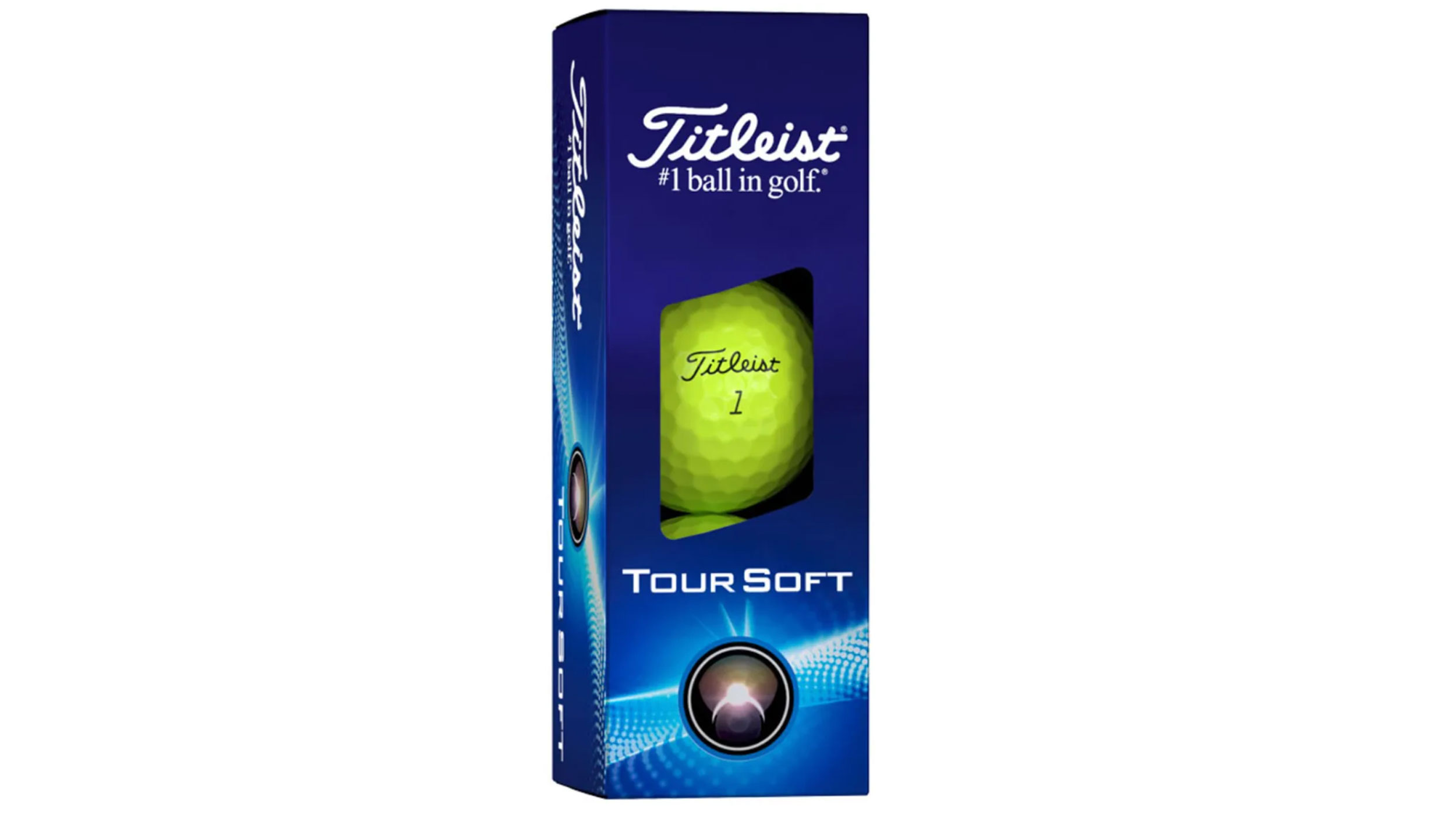
Specifications
Reasons to buy
Reasons to avoid
Another option in the mid-range in terms of price, the Tour Soft offers excellent value thanks to the performance on offer, moulded by the new thin Fusablend cover which delivers plenty of greenside spin and control. We also love the addition of the thick 'T' shaped alignment aid on the side of the golf ball and found it very helpful during testing.
As the name suggests, these balls are incredibly soft, yet still feel powerful off the tee. While not among the best distance golf balls, they offer a good balance of spin and distance. High-spin players might find them prone to flying higher due to extra spin.
You won't get as much distance with the Tour Soft as you will with the Pro V1 or the Pro V1x but the Tour Soft excels around the greens, offering solid control for wedge shots. With strong durability and an affordable price, it's another excellent option for those who don't want to pay the big prices for the best premium golf balls.
- Read our full Titleist 2024 Tour Soft Golf Ball Review
Srixon AD333 Ball
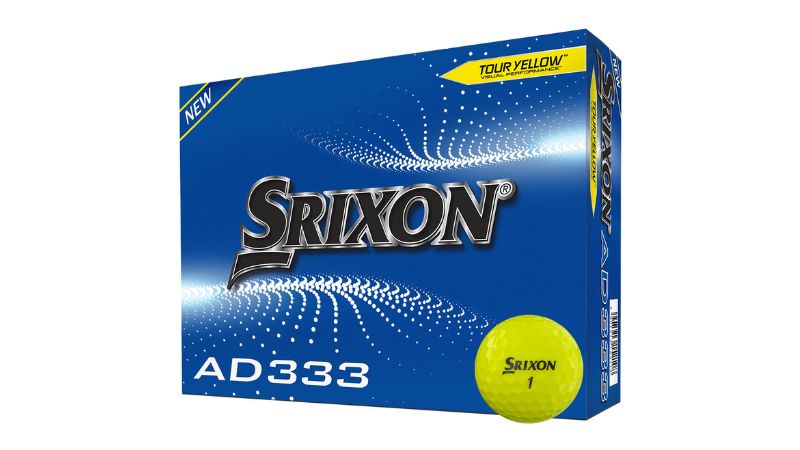
Specifications
Reasons to buy
Reasons to avoid
The latest incarnation of this ever-popular Srixon ball has undergone a number of design tweaks, including a lower compression and the introduction of the FastLayer core from Srixon’s Z-Star tour-preferred range.
Straight out of the box the Srixon AD333 golf ball it has a classy look to it, particularly in this Tour Yellow version which has a pearlescent, almost shimmery finish. It delivers good distance, particularly on mid-to-long approach shots, coupled with a strong and consistent flight. Around the greens, that lower compression does bring a noticeably quieter sound and softer feel than previous Srixon golf balls.
Previous models of the AD333's scuffed up a little more than they should have gievn their use, but the durability has taken a step forward with the latest model. We did notice some wear to the paint and logo after a couple of rounds in testing, so maybe there is still work to go in this area.
- Read our full Srixon AD333 Golf Ball Review
Best soft feel
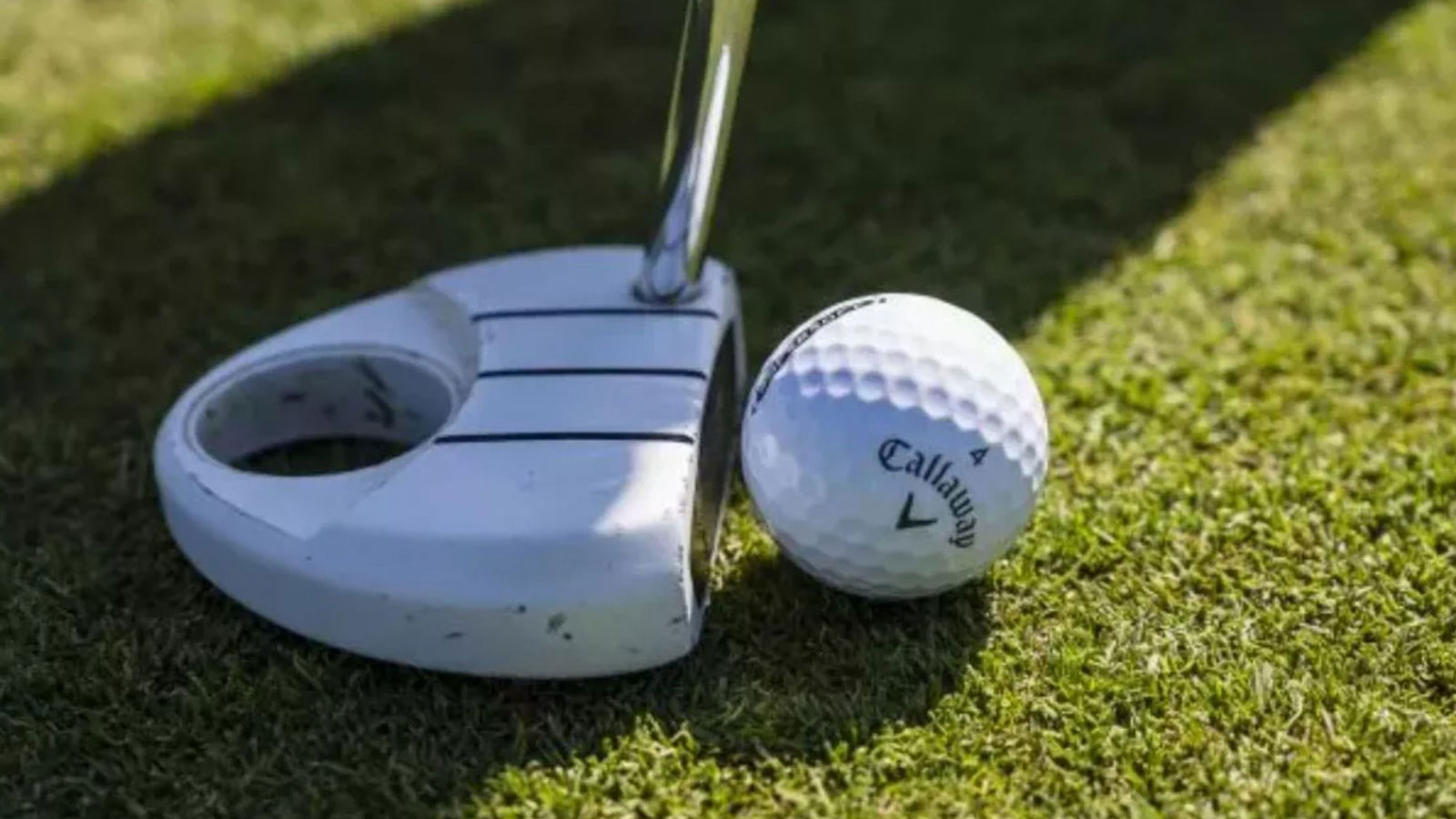
Specifications
Reasons to buy
Reasons to avoid
Callaway’s low-compression Supersoft ball is one of the best soft-feeling golf balls for mid-range handicappers. It features, what Callaway has christened, a Paraloid Impact Modifier which delivers improved distance and durability without sacrificing feel and short-game control.
The Soft Compression Core enhances energy transfer for more ball speed and a high-launch, low-spin combo in your longer clubs, something we noticed pretty easily during testing, noticing the receptiveness with longer irons and hybrids in particular.
Unfortunately, there is no triple track alignment aid like we some on some of the best Callaway golf balls but a chunky alignment arrow was enough to satisfy our alignment needs on the greens, a great habit to get into if you want to hit more lines and hole more putts. There's good news for you colorful golf ball lovers - not only is this ball available in yellow, it's also available in matte orange, green, pink and red, making it one of the best golf balls for winter.
- Read our full Callaway Supersoft Golf Ball Review
Wilson Staff Duo Optix ball
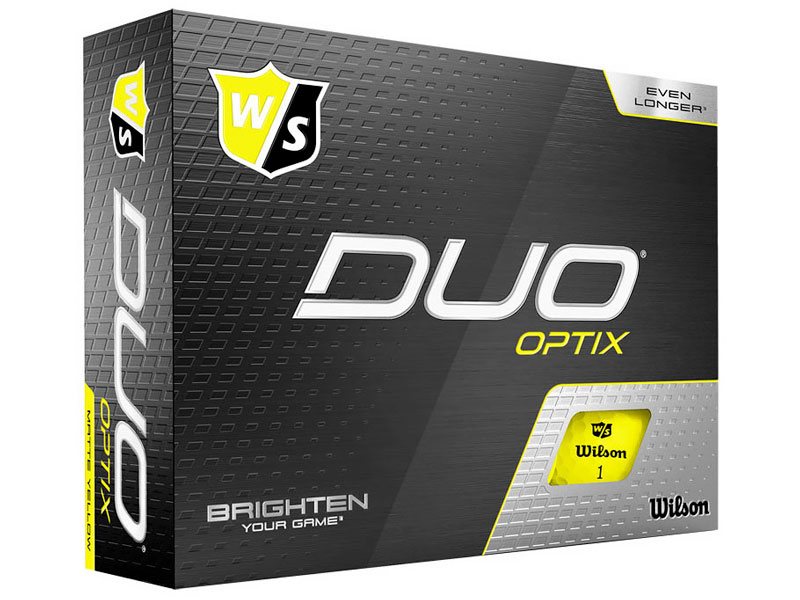
Specifications
Reasons to buy
Reasons to avoid
Thanks to a smaller polybutadiene core, the latest Wilson Staff DUO Optix promises more distance and accuracy than ever along with an enhanced feel around the greens.
Cheaper golf balls tend to sacrifice spin and feel around the greens, but the DUO Optix has a noticeably softer feel than many of it's competitors around the same price point.
The matte finish is unique but ensure you won't be blinded by the sun reflecting off your golf ball. It did mean the ball was a little more elusive when we searched for it during autumn months amongst the trees and longer grass, however, meaning this ball it maybe better suited to summer use. The finish and color can also make this ball look almost dimpleless with may unsettle a few players, but these are minor issues on otherwise a really solid yellow golf ball.
- Read our full Wilson Duo Optix Ball Review
How we test golf balls
Here at Golf Monthly, our highly experienced team of testers play a lot of golf in different conditions throughout the year. Through our rigorous testing procedures, our collective goal is to test every golf ball model on the market as soon as it becomes available to us, putting in the hours in all weathers out on the golf course, the practice ground, the short-game area, the practice bunker and the putting green.
Our testing procedure is one honed over decades of experience and our tests and reviews are done by golfers, for golfers. We know our stuff - mainly due to our passion for the game, and you want to ensure that our loyal readers can make the best informed purchasing decisions via our reviews and buying guides.
They're 100% impartial, too. No one brand gets better treatment or bias over another, nor can a manufacturer 'buy' a good review. We simply call it how we see it.
When we test golf balls, we want to get an idea of how each ball performs in all areas of the game so we can tell you what its strengths and weaknesses are, allowing you to make an informed choice about your next golf ball purchase. Whenever possible, we will also seek to acquire launch monitor data for a more detailed analysis of each ball model's performance.
What to consider when buying golf balls
There is a lot of range when it comes to golf balls - some designed for distance, other more so for short game. Some cover both, but you'll have to pay extra for that. As a result, trying to choose the right golf ball can be a difficult task for some players.
To help you purchase the best golf ball for your game, we've set out a few points below that you should bear in mind when you head down to your local golf shop.
1. Soft or firm?
The best premium golf balls come in alternative versions that spin slightly less for players who prefer a firmer feel or more control off the tee. We recommend you try both kinds of feel from various distances to find your preferred feel.
2. Cover material
Urethane-covered balls offer the best spin control and feel but do cost more. Experiment with each to see if you notice enough of a difference to justify the extra cost, or whether the best mid-price golf balls might be an option.
3. Long game or short game?
Which aspect of the game is most important to you? Are you looking for maximum distance or something that allows your short game to shine around the greens?
If you value the former then check out our guide to the best distance golf balls; if you put a real premium on feel, perhaps our best soft feel golf balls guide might be a good next step.
4. Color/visuals
Looks matter. If you're staring down at a golf ball that doesn't suit your eye, you're fighting a losing battle before you've even swung the club. Make sure you choose a golf ball (and color) that you like the look of.
5. Price
There's little point into splashing $50 on premium golf balls if you're a 34 handicapper and lose 3-4 golf balls a round. Make sure you target a golf ball that suits your budget as a result or else you'll waste hundreds of bucks a year - golf is expensive enough as it is
For more advice on buying golf balls, we have a ton of information on our website that will help you make the right choice for you. If you're after colored balls in particular, take a look at our guide on the best-personalized golf balls and our guide on the best 10 golf balls with matte finishes that offer high performance.
FAQs
Are yellow golf balls better?
From a golf ball performance standpoint in how it reacts to ball-striking and such, there is usually next to no difference really. A white Pro V1, and yellow Pro V1 are going to react the same way. However yellow golf balls are said to be easier to see and find on the golf course. In our testing, we found that off the tee it was noticeable that the yellow color was easier to track through the air than the white. It stayed visible for longer through the sky and this was even more the case in overcast conditions.
Are yellow golf balls allowed?
Yes yellow golf balls are allowed at every level of the game. In professional tournaments, the USGA does not restrict the color of the golf ball but a player is not allowed to switch colors during the round. If a professional golfer starts a round with a yellow golf ball, they will have to use a yellow golf ball for that entire round
Who plays yellow golf balls on Tour?
If honest there are not that many Tour professionals who put yellow balls into play. Bubba Watson was the most high-profile example but he went back to the traditional white reasonably quickly. Kyle Jones Rory Sabbatini and Davis Love III have also dabbled with yellow golf balls as well.
Subscribe to the Golf Monthly newsletter to stay up to date with all the latest tour news, equipment news, reviews, head-to-heads and buyer’s guides from our team of experienced experts.

Sam is Golf Monthly's Senior E-commerce Editor which mean's he oversees everything E-com related on the site.
This takes the form of creating and updating Buying Guides, reviews, and finding bargain prices for deals content.
Working with golf gear and equipment over the last seven years, Sam has quickly built outstanding knowledge and expertise on golf products ranging from drivers, to balls, to shoes.
He combines this knowledge with a passion for helping golfers get the best gear for them, and as such Sam manages a team of writers that look to deliver the most accurate, insightful, and informative reviews and buying advice. This is so the reader can find exactly what they are looking for, at a good price.
Additionally Sam oversees Golf Monthly voucher/coupon content which seeks to find you the best offers and promotions from well-known brands like Callaway, TaylorMade and many more.
Unfortunately, Sam is not a member of any club at the moment but regularly gets out on the golf course to keep up the facade of having a single-figure handicap.
- Conor KeenanGear & Ecommerce Writer
